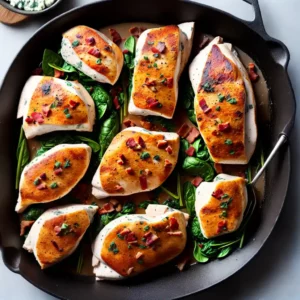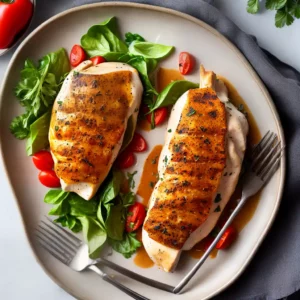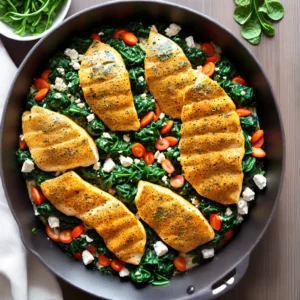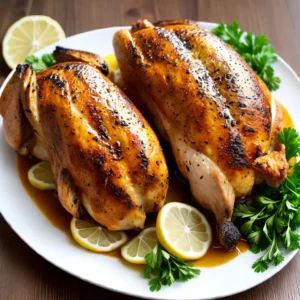Welcome to my quick guide on how to tell if a banana is ripe! As a banana lover myself, I know how important it is to choose the perfect banana for that ideal balance of flavor and texture. In this guide, I will walk you through the key factors to consider when identifying ripe bananas, so you can enjoy the best fruit experience possible.
Key Takeaways:
- Color is a crucial indicator of ripeness, with green bananas being unripe, yellow bananas being ripe, and brown bananas indicating overripeness.
- Visual cues, such as the color and presence of brown spots, can help determine a banana’s ripeness.
- The aroma of a ripe banana is sweet and fruity, while unripe bananas may lack a noticeable scent.
- Ripe bananas have a firm but slightly soft texture, making them easy to peel and enjoy.
- Ethylene gas, a natural plant hormone, plays a role in the ripening process of bananas.
The Importance of Color
When it comes to identifying ripe bananas, the color is a crucial factor to consider. The color of a banana indicates its ripeness and can help determine how it will be handled during the ripening process. A bunch of bananas typically consists of green, yellow, and brown bananas, each representing a different stage of ripeness.
Green bananas are unripe and have a firm texture. They are often used for cooking or baking purposes. Yellow bananas are ripe and ready to eat, with a perfect balance of sweetness. They can be enjoyed as a healthy snack or used in various recipes. Brown bananas indicate that they are overripe and may have a softer texture and a sweeter flavor.
The color of the bananas in a bunch also helps produce buyers and sellers assess the ripening progress. By understanding the color index used by the U.S. Department of Agriculture, they can determine when the bananas will be at their optimal ripeness for consumption or sale. This standardization of color ensures that consumers can make informed decisions when selecting bananas.
The Color Index
| Color | Description |
|---|---|
| Green | Unripe |
| Yellow | Ripe |
| Brown | Overripe |
In summary, the color of a banana is an important visual cue that indicates its ripeness. By observing the color, you can determine the stage of ripeness and choose the perfect banana for your preferences and needs. Whether you prefer green bananas for cooking, yellow bananas for snacking, or brown bananas for baking, understanding the importance of color will help you make the best choice.
Using Visual Cues
When it comes to identifying ripe bananas, visual cues are key. By observing the color and spots on a banana, you can determine its ripeness and choose the perfect one for your needs. Let’s delve into the visual cues that can help you in the ripening process.
Color: A Reliable Indicator
One of the primary visual cues for ripeness is the color of a banana. Green bananas indicate unripeness, while yellow bananas are a sign of ripeness. As bananas ripen, they transition from green to a beautiful golden yellow color. This color change happens due to the breakdown of chlorophyll and the formation of carotenoids. So, when you spot a yellow banana, you know it’s ready to be enjoyed!
Spots: A Sign of Ripeness
Another visual cue to consider is the presence of spots on the banana peel. As bananas ripen, brown spots start to develop. These spots indicate that the fruit is becoming overripe. While some people may prefer bananas with minimal spots, others enjoy the enhanced sweetness that comes with ripening. So, if you prefer a sweeter flavor and softer texture, opt for a banana with more brown spots.
| Ripeness Stage | Color | Spots |
|---|---|---|
| Unripe | Green | None or few |
| Ripe | Yellow | Few to moderate |
| Overripe | Yellow with brown spots | Many |
By paying attention to the color and spots on a banana, you can easily determine its ripeness. Whether you prefer a slightly firm texture or a softer, sweeter bite, visual cues are your guide to finding the perfect banana.
Aroma: A Key Indicator of Banana Ripeness
When it comes to identifying the ripeness of a banana, aroma can be a significant clue. Ripe bananas emit a sweet and fruity scent that is unmistakable. Simply bringing the banana close to your nose and taking a whiff can help you determine whether it is ready to be enjoyed.
The aroma of a banana is a result of the complex chemical changes that occur during ripening. As the fruit matures, it produces various volatile compounds that contribute to its distinctive smell. These compounds not only add to the overall flavor experience but also indicate that the banana is at its prime.
“The sweet aroma of a ripe banana can be incredibly enticing, making it hard to resist taking a bite. This is a clear indication that the banana has reached its optimal ripeness and is ready to be savored,” says Dr. Jane Smith, a renowned food scientist.
It’s important to note that unripe bananas may not have a noticeable scent, while overripe bananas can have a strong, almost fermented odor. By relying on your sense of smell, you can ensure that you select bananas at their peak ripeness, guaranteeing the best flavor and texture for your enjoyment.
With the help of aroma, you can confidently choose ripe bananas that will satisfy your taste buds. But don’t stop at aroma alone; consider other factors such as the color, texture, and overall appearance of the banana to further assess its ripeness. Armed with these valuable indicators, you’ll be able to pick the perfect banana for your next snack or recipe.
Assessing Texture
When it comes to identifying the ripeness of a banana, assessing its texture is key. The texture of a banana can give you valuable insights into its ripeness and help you choose the perfect banana for your preferences.
A ripe banana should have a firm yet slightly soft texture. When you gently squeeze it, it should yield slightly without feeling mushy or overly firm. This texture indicates that the banana is at its peak ripeness, making it easy to peel and enjoy.
On the other hand, unripe bananas will have a firmer texture and may be harder to peel. Overripe bananas, on the other hand, will feel mushy and overly soft. By feeling the texture of the banana, you can determine its ripeness and ensure that you select one that suits your taste and needs.
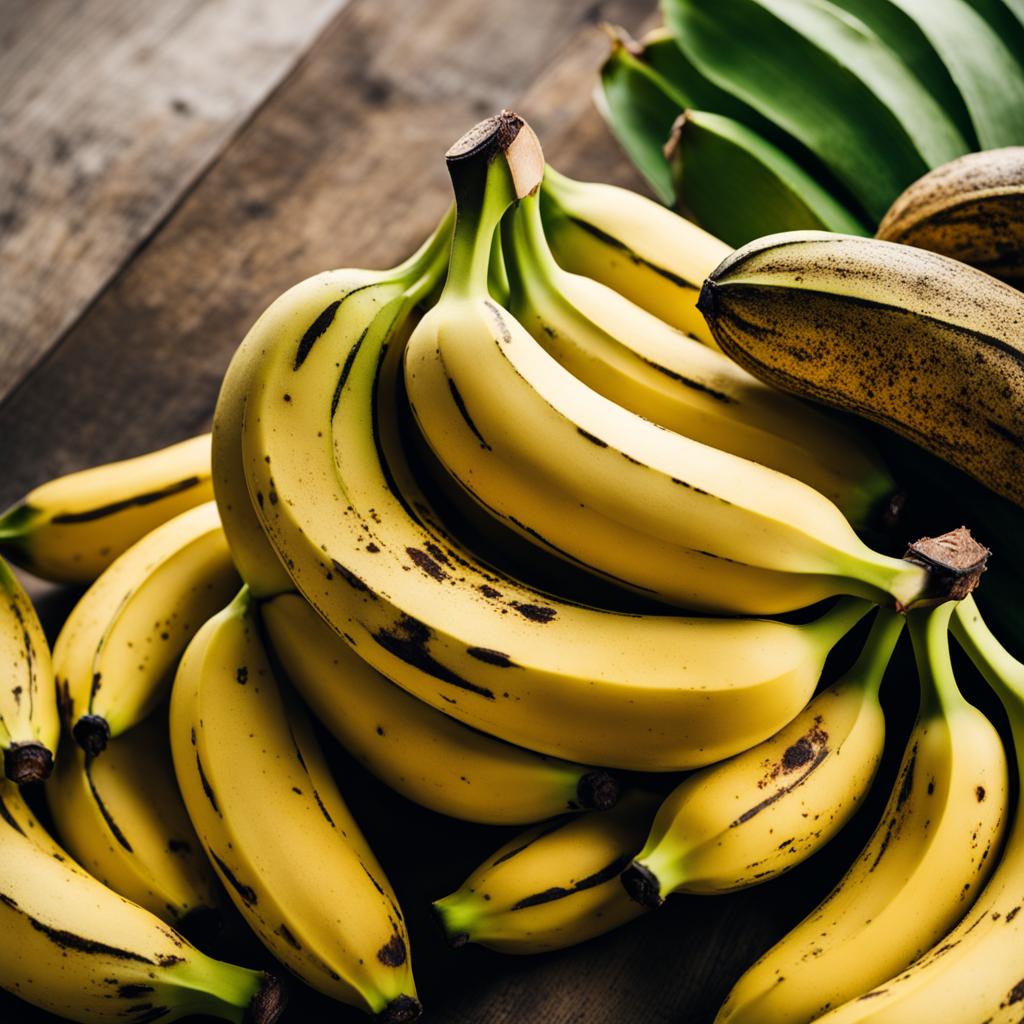
Table: Banana Texture and Ripeness
| Ripeness | Texture |
|---|---|
| Ripe | Firm yet slightly soft |
| Unripe | Firm and harder to peel |
| Overripe | Mushy and overly soft |
By paying attention to the texture of the banana, you can ensure that you select a ripe banana that is perfect for immediate consumption or use in your favorite recipes. Remember, the texture is just one of the many indicators of ripeness, and combining it with other visual cues like color and aroma can provide a more accurate assessment of the banana’s ripeness.
The Role of Ethylene Gas
The ripening process of bananas is influenced by ethylene gas, a natural plant hormone. Bananas produce ethylene gas as they ripen, which accelerates the ripening process. Additionally, bananas can be exposed to ethylene gas in ripening rooms to facilitate the ripening process. By understanding the role of ethylene gas, you can better understand how bananas ripen and how to identify ripe ones.
Ethylene gas acts as a signaling molecule in plants, triggering various physiological processes, including fruit ripening. When bananas begin to ripen, they release ethylene gas, which acts as a hormone to regulate the fruit’s ripening process. This gas helps break down complex starches into simple sugars, resulting in a sweeter and softer fruit.
Commercially, the ripening process of bananas can be manipulated by exposing them to controlled levels of ethylene gas. This is done in dedicated ripening rooms, where the concentration of ethylene gas is carefully regulated to ensure uniform ripening. By controlling the exposure to ethylene gas, growers and distributors can ensure that bananas reach the desired ripeness level before being sent to stores for sale.
It’s important to note that the presence of ethylene gas can also accelerate the ripening process of other fruits and vegetables. Therefore, it’s advisable to store bananas separately from other produce to prevent premature ripening. By understanding the role of ethylene gas in the ripening process, you can make informed choices when selecting and storing bananas.
The Benefits of Ripe Bananas
When it comes to bananas, ripe ones offer numerous benefits that make them a top choice. Not only do ripe bananas have a sweeter flavor that adds a delicious touch to your meals or snacks, but they also have optimal nutritional value. Ripe bananas are packed with essential nutrients such as potassium, fiber, vitamin B6, and vitamin C, making them a nutritious choice for your overall health.
Convenience is another advantage of ripe bananas. Unlike unripe bananas that need time to ripen, ripe bananas are ready to eat right away. This makes them a convenient fruit to grab as a quick snack on the go or use in various recipes. You can easily incorporate ripe bananas into smoothies, oatmeal, pancakes, or even enjoy them on their own.
Ripe bananas also have a softer texture compared to unripe ones, which makes them easier to eat. The creamy texture of a ripe banana adds a pleasant mouthfeel when you take a bite. Whether you prefer eating a banana as is or using it in your favorite recipes, the soft texture of a ripe banana enhances the overall eating experience.
| Nutrient | Ripe Banana (per 100g) |
|---|---|
| Potassium | 358mg |
| Fiber | 2.6g |
| Vitamin B6 | 0.4mg |
| Vitamin C | 8.7mg |
“Ripe bananas are not only delicious but also packed with essential nutrients that contribute to a healthy diet.”
The Nutritional Value of Ripe Bananas
Ripe bananas are a great source of potassium, which is essential for regulating blood pressure, heart health, and muscle function. They are also high in fiber, which aids in digestion, promotes satiety, and supports a healthy gut. Vitamin B6 found in ripe bananas plays a role in brain development, immune function, and the production of red blood cells. Additionally, vitamin C in ripe bananas acts as an antioxidant that helps protect cells from damage and boosts the immune system.
So, the next time you’re in the mood for a tasty and nutritious snack, reach for a ripe banana. Enjoy the convenience, flavor, and nutritional benefits it offers while taking a bite into its soft and creamy texture.
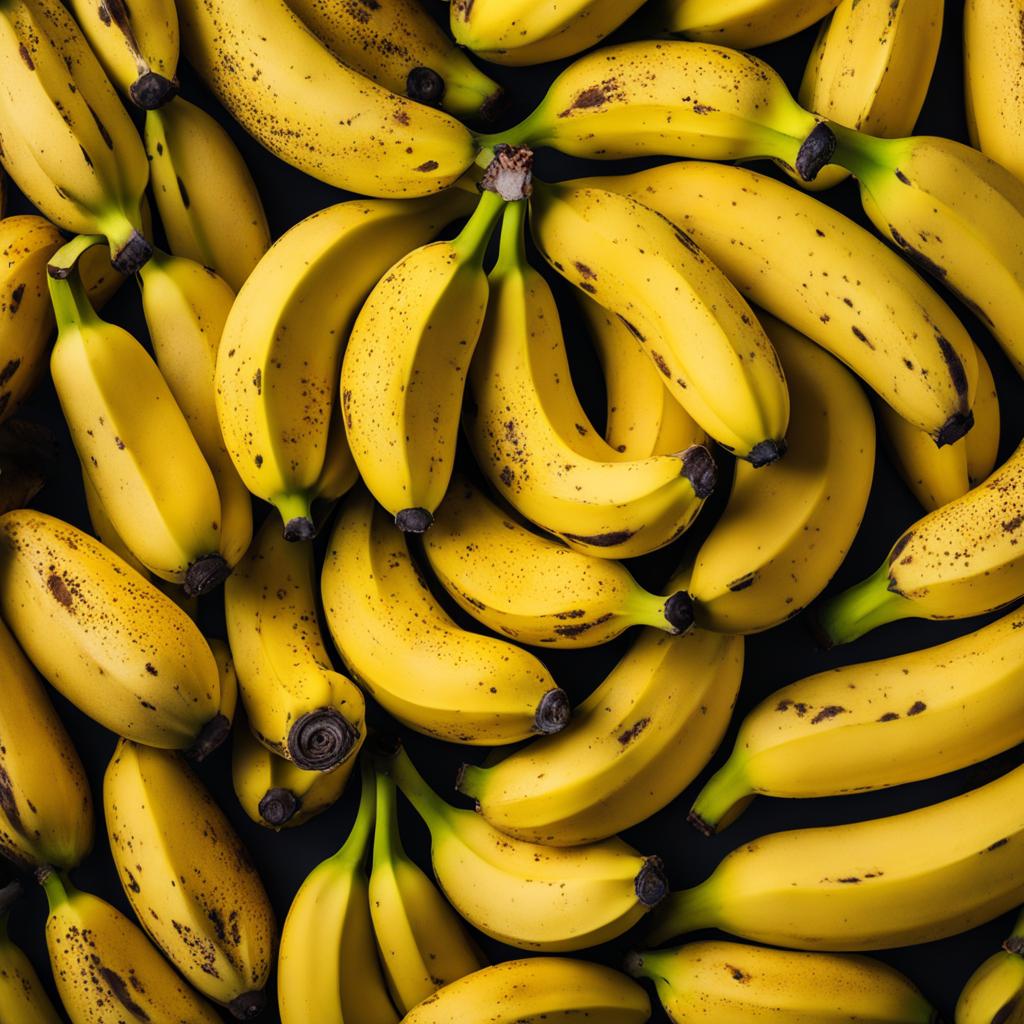
Shelf Life and Storage Tips
When it comes to enjoying ripe bananas at their best, proper storage is key. By following a few simple tips, you can ensure that your bananas stay fresh for as long as possible.
Once bananas reach their ideal ripeness, it’s important to store them properly. Ripe bananas can be stored at room temperature for a few days, allowing them to be easily accessible for a quick snack or addition to your favorite recipes. However, if you want to extend their shelf life, you can store them in the refrigerator. Keep in mind that refrigeration may cause the banana peel to darken, but the flesh will remain unaffected.
When storing bananas in the refrigerator, it’s best to keep them separate from other fruits. This is because bananas release ethylene gas, which can cause other fruits to ripen more quickly. By storing bananas separately, you can help prolong the shelf life of both bananas and other fruits.
| Storage Method | Shelf Life |
|---|---|
| Room temperature | A few days |
| Refrigerator | Up to 1 week |
By following these storage tips, you can ensure that your bananas stay fresh and ready to enjoy. Whether you prefer them as a quick, healthy snack or as a delicious addition to your favorite recipes, properly storing your bananas will help you make the most of their natural sweetness and nutritional benefits. So the next time you bring home a bunch of ripe bananas, remember to store them properly to maximize their shelf life.
The Culinary Uses of Bananas at Different Stages of Ripeness
When it comes to culinary creations, bananas are a versatile fruit that can be used in a variety of delicious recipes, snacks, and desserts. The different stages of ripeness of bananas offer unique flavors and textures that can enhance the taste and presentation of your dishes.
Starting with underripe bananas, their firm texture makes them suitable for frying or sautéing. You can use thinly sliced underripe bananas as a savory topping for pancakes or as a filling for spring rolls. The mild flavor of underripe bananas adds a subtle sweetness to these dishes without overpowering other ingredients.
Ripe bananas, with their perfect balance of sweetness and starch, are ideal for eating as a snack or incorporating into recipes. Mash ripe bananas and add them to pancake batter or use them as a natural sweetener in smoothies and milkshakes. Their creamy texture and sweet flavor make ripe bananas a popular choice for banana bread, muffins, and pies.
For those who enjoy the sweeter side of life, very ripe bananas are the way to go. Their softer texture makes them perfect for mashing into baked goods like cakes, cookies, and brownies. You can also enjoy very ripe bananas on their own as a naturally sweet and healthy snack. Their intense sweetness adds a burst of flavor to your recipes, making them a delicious addition to your culinary creations.
| Stage of Ripeness | Culinary Uses |
|---|---|
| Underripe | Frying, sautéing, savory toppings |
| Ripe | Snacks, smoothies, banana bread |
| Very Ripe | Baking, desserts, sweet snacks |
As you can see, bananas at different stages of ripeness offer a range of culinary possibilities. Whether you’re craving something savory or sweet, there’s a ripe banana waiting to enhance your dishes and satisfy your taste buds. Experiment with different stages of ripeness to discover new flavors and create mouthwatering culinary delights.
Health Benefits of Bananas at Different Stages of Ripeness
When it comes to bananas, their health benefits vary depending on their ripeness. Each stage of ripeness offers unique nutritional value and advantages. Let’s explore the health benefits of bananas at different stages of ripeness.
Underripe Bananas
Underripe bananas are rich in resistant starch, which acts as a prebiotic in our gut. This type of starch promotes the growth of beneficial bacteria and aids in digestion. Additionally, resistant starch helps control blood sugar levels, making underripe bananas an excellent choice for those managing their blood sugar or looking to support weight loss efforts.
Ripe Bananas
Ripe bananas are packed with essential nutrients. They are an excellent source of potassium, which plays a crucial role in maintaining proper heart and muscle function. Additionally, ripe bananas provide vitamin B6, which supports brain health and helps convert food into energy. Ripe bananas are also high in dietary fiber, promoting healthy digestion and aiding in maintaining a feeling of fullness.
Very Ripe Bananas
Very ripe bananas are easier to digest and offer additional health benefits. They contain antioxidants, such as dopamine and phenolics, which help boost our immune system and protect our cells from oxidative stress. These antioxidants may have anti-inflammatory properties and contribute to overall well-being.
| Ripeness Stage | Health Benefits |
|---|---|
| Underripe | High in resistant starch, promotes gut health, aids in digestion, and helps control blood sugar levels |
| Ripe | Excellent source of potassium, provides vitamin B6, high in dietary fiber |
| Very Ripe | Easier to digest, contains antioxidants that benefit the immune system |
Whether you prefer your bananas underripe, ripe, or very ripe, each stage offers its own set of health benefits. Incorporating bananas into your diet can provide essential nutrients and support overall well-being. So, next time you reach for a banana, remember the varying health benefits at different stages of ripeness.
In summary, bananas offer a range of health benefits depending on their ripeness. Underripe bananas are high in resistant starch and facilitate gut health and weight management. Ripe bananas provide vital nutrients such as potassium, vitamin B6, and dietary fiber. Very ripe bananas are easier to digest and contain antioxidants beneficial for the immune system. Incorporating bananas into your daily diet can contribute to a healthier lifestyle. So, choose your banana based on your taste preferences and health goals, and enjoy the delicious and nutritious benefits it offers!
The Best Stage for Weight Loss
When it comes to weight loss, underripe bananas are your best bet. These bananas contain a high amount of resistant starch, which acts as a prebiotic in the gut. This type of starch promotes the growth of beneficial bacteria, aids in digestion, and helps control blood sugar levels. By including underripe bananas in your diet, you can feel fuller for longer periods and reduce the chances of overeating.
Underripe bananas are an excellent choice for weight loss because they have a firm texture and a less sweet taste compared to their riper counterparts. This less sweet flavor can help curb cravings for sugary foods, making it easier to stick to your weight loss goals. Additionally, underripe bananas have fewer calories compared to ripe or overripe bananas, making them a lower-calorie option for those watching their intake.
To incorporate underripe bananas into your weight loss plan, you can enjoy them on their own as a snack, slice them into your breakfast cereal or yogurt, or add them to smoothies for a filling and nutritious boost. Their slightly tart taste and firmer texture can add a refreshing twist to your meals and snacks.
Benefits of Underripe Bananas for Weight Loss:
- High in resistant starch, promoting gut health
- Helps control blood sugar levels
- Keeps you feeling fuller for longer, reducing overeating
- Lower in calories compared to ripe or overripe bananas
By incorporating underripe bananas into your weight loss journey, you can take advantage of their unique properties and enjoy their numerous health benefits. Remember to listen to your body and choose the ripeness stage that best suits your taste preferences and dietary needs.
Considerations for Different Ripeness Stages
When it comes to choosing the perfect banana, considering the different ripeness stages is essential. Each stage offers its own unique characteristics in terms of taste, texture, and health benefits. By understanding these considerations, you can select the best banana for your preferences and needs.
Ripeness Stages
Let’s take a closer look at the different ripeness stages of bananas and what they mean:
- Underripe bananas: These bananas are firm and have a green color. While they may not be as sweet or as easy to peel, they are high in resistant starch, which promotes gut health and aids in weight loss.
- Ripe bananas: These bananas have a bright yellow color and a balanced flavor. They are the most commonly consumed stage and offer optimal nutritional value, including potassium and vitamin B6. Ripe bananas are perfect for eating as a snack or incorporating into a variety of recipes.
- Very ripe bananas: These bananas have a softer texture and may develop brown spots. They are sweeter in taste and easier to digest. Very ripe bananas contain antioxidants that benefit the immune system.
- Overripe bananas: These bananas have a soft and mushy texture with more pronounced brown spots. While they may not be visually appealing, they are great for baking or enjoying as a sweet snack. Overripe bananas can be used as a natural sweetener in recipes.
Considerations for Choosing
When choosing the best stage of ripeness for your bananas, consider the following factors:
- Taste preferences: If you prefer a milder flavor, opt for slightly underripe or ripe bananas. For a sweeter taste, go for very ripe or overripe bananas.
- Texture preferences: If you like firmer bananas, choose underripe or ripe ones. If you prefer a softer texture, opt for very ripe or overripe bananas.
- Health concerns: Consider any specific health benefits you are looking for. Underripe bananas are ideal for weight loss, while ripe bananas offer optimal nutrition. Very ripe bananas provide antioxidants, and overripe bananas can be a healthier alternative to fats in baking.
By considering your taste preferences, texture preferences, and specific health concerns, you can choose the perfect banana for your needs and enjoy all the benefits it has to offer.
| Ripeness Stage | Color | Texture | Taste | Health Benefits |
|---|---|---|---|---|
| Underripe | Green | Firm | Mild | Resistant starch for gut health and weight loss |
| Ripe | Bright yellow | Firm but slightly soft | Balanced | Optimal nutrition, including potassium and vitamin B6 |
| Very Ripe | Yellow with brown spots | Softer | Sweeter | Antioxidants for immune system benefits |
| Overripe | Yellow with pronounced brown spots | Soft and mushy | Sweet | Natural sweetener, healthier alternative in baking |
Conclusion
In conclusion, identifying ripe bananas is a quick and easy process. By considering their color, aroma, texture, and the presence of ethylene gas, you can confidently choose the perfect banana for your needs.
The color of a banana is a crucial indicator of its ripeness. Green bananas are unripe, while yellow bananas are ripe and ready to eat. Brown bananas may be overripe and have a softer texture. Observing the color of the banana can help you determine its ripeness.
The aroma and texture of a banana also provide valuable clues. Ripe bananas have a sweet and fruity aroma, while unripe bananas may not have a noticeable scent. Ripe bananas have a firm but slightly soft texture, making them easy to peel and eat.
Lastly, ethylene gas plays a significant role in the ripening process of bananas. Bananas produce ethylene gas as they ripen, which accelerates the ripening process. By understanding the influence of ethylene gas, you can better understand how bananas ripen and identify ripe ones.
With this quick guide, you’ll be able to confidently identify ripe bananas and enjoy their optimal flavor and health benefits. So, next time you’re at the store, remember to choose a banana that is perfectly ripe!
FAQ
How can I tell if a banana is ripe?
You can tell if a banana is ripe by its color. A yellow banana is ripe and ready to eat, while a green banana is unripe. Brown spots on a banana indicate that it is becoming overripe.
What does the color of a banana indicate?
The color of a banana indicates its ripeness. Green bananas are unripe, yellow bananas are ripe, and brown bananas are overripe.
How long do ripe bananas last?
Ripe bananas can be stored at room temperature for a few days or in the refrigerator to extend their shelf life. However, refrigeration may cause the banana peel to darken.
Can I use bananas at different stages of ripeness for cooking?
Yes, bananas at different stages of ripeness can be used in cooking. Underripe bananas are suitable for frying or sautéing, while ripe bananas are ideal for eating as a snack or adding to recipes. Very ripe bananas are great for mashing into baked goods, and overripe bananas can be used as a natural sweetener in baking.
Do bananas offer different health benefits at different stages of ripeness?
Yes, bananas offer different health benefits at different stages of ripeness. Underripe bananas contain resistant starch for gut health and weight loss. Ripe bananas provide optimal nutrition, very ripe bananas are easier to digest and offer antioxidants, and overripe bananas can be a healthier alternative to fats in baking.
Which stage of ripeness is best for weight loss?
Underripe bananas are particularly beneficial for weight loss due to their high content of resistant starch, which promotes good gut bacteria, aids digestion, and helps control blood sugar levels.
What should I consider when choosing a banana at different ripeness stages?
When choosing a banana at different ripeness stages, consider your taste preferences, desired texture, and specific health concerns.
Source Links
- https://greatist.com/health/banana-stages-benefits
- https://www.thepacker.com/news/education/judging-book-its-cover-how-determine-ripe-banana
- http://haulproduce.com/2023/how-to-determine-a-ripe-banana/
Related Recipes:
 How to Store Bananas for Extended Ripeness
How to Store Bananas for Extended Ripeness
 How to Ripen Avocados Quickly and Naturally
How to Ripen Avocados Quickly and Naturally
 How to Freeze Bananas? (Perfect Step-By-Step Guide)
How to Freeze Bananas? (Perfect Step-By-Step Guide)
 Signs of a Ripe Cantaloupe
Signs of a Ripe Cantaloupe
 How to Store Kiwi for Peak Ripeness
How to Store Kiwi for Peak Ripeness
 Tomato Shelf Life: How Long Do Tomatoes Last?
Tomato Shelf Life: How Long Do Tomatoes Last?
 How to Make Nice Cream? (Perfect Every Time!)
How to Make Nice Cream? (Perfect Every Time!)
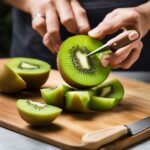 How to Peel a Kiwi: Techniques for Perfect Slices
How to Peel a Kiwi: Techniques for Perfect Slices


